Review: 2014 Cadillac CTS 2.0T (With Video)

It’s been decades since Cadillac produced the “Cadillac” of anything. However, when car buffs dismiss the only American luxury brand left, they fail to see Cadillac’s march forward. 2002 brought the first RWD Cadillac since the Fleetwoood. A year later the XLR roadster hit, followed in 2004 by Cadillac’s first 5-Series fighter, the STS. Not everything was rosy. The original CTS drove like a BMW but lacked charm and luxury fittings. The XLR was based on a Corvette, which made for excellent road manners, but the Northstar engine didn’t have the oomph. The STS sounded like a good idea, but the half-step CTS wasn’t much smaller and ultimately shoppers weren’t interested in a bargain option. That brings us to the new ATS and CTS. Ditching the “more car for less money” mantra, the ATS has been created to fight the C/3/IS leaving the CTS free to battle the E/5/GS head-on. Can Caddy’s sensible new strategy deliver the one-two punch fans have hoped for? I snagged a CTS 2.0T for a week to find out.
Exterior
I found the outgoing CTS a little discordant, but 2014 brings an elegant more aggressive refresh. GM’s Art and Science theme has matured from “cubism gone wrong” to shapes that flow and jibe with a larger grille and softer creases. The 5-Series continues to go for elegant and restrained, I find the XF and A6’s design a mixture of plain-Jane and snazzy headlamps while the Infiniti Q5o and Lexus GS are going for flowing elegance.
The demur side profile continues with a simple character line to draw your eye from front to rear. One thing you’ll notice during that eye-movement is the distinct RWD proportions that separate the CTS, E, 5, GS, XF and Q50 from the long-nosed Audi A6 and near-luxury FWD options. Out back the CTS’ rump is a bit less exciting but employs all the latest luxury cues from hidden exhaust tops to light piped tail lamps. I was hoping Caddy’s fins would be further resurrected, but the “proto fins” on the XTS are absent. Pity. Obvious from every angle is an attention to build quality absent from earlier generations with perfect panel gaps and seams.
Structurally, the CTS has jumped ship to a stretched version of the Alpha platform the smaller ATS rides on. Thanks to the automotive taffy-pull, the CTS is now 2.3 inches longer than a BMW 5-series. However, because of the Alpha roots, the CTS has actually shrunk for 2014 by 3 inches in length while getting 2 inches wider and a 2 inch roof height reduction.
Interior
GM has proven they are able to create a car that drives competitively and looks sexy on the outside, but interiors have always been a mixed bag. The last gen CTS felt as if it was built with a mixture of custom parts and Chevy hand-me downs. No more. Like the ATS, the Caddy shares little with the rest of GM’s mass market-rabble. It is hard to find fault in the CTS’s dashboard’s combination of injection molded soft touch plastics, leather, faux suede, real wood, carbon fiber and contrasting stitching. Cadillac continues their dedication to shiny touch buttons on the dash and no luxury sedan would be complete without a little gimmicky drama. The CTS’s motorized cupholder lid ties with the XF’s automated air vents for the feature most clearly designed to brag about. I’m not sure how long that little motor will crank away, but it can’t be any less reliable than Jaguar’s theatrical air vents.
Because of the way Cadillac chose to stretch the CTS’ donor platform, cargo and interior space aren’t the primary beneficiaries. This means that rear legroom actually shrinks for 2014 to the smallest entry in this segment by a hair. Trunk volume also drops from a competitive 13.6 cubes to 10.5 which is a 20% reduction compared to the Lexus and BMW and 30% smaller than the Mercedes. The CTS makes up for some of this with comfortable thrones all the way around and when equipped with the optional 20-way front seats the CTS ranks #2 in the segment just behind BMW’s optional 24-way sport seats in comfort. Taller drivers and passengers beware, dropping the CTS’ roof height made the profile sexier but cuts headroom to the lowest in the segment.
2013 Cadillac ATS Instrument Cluster
There is one glaring flaw. The decidedly dowdy base instrument cluster is shared with the ATS (pictured above) and the XTS. Our Facebook followers were so put-off by Caddy’s base dials, the fervor spawned a Vellum Venom Vignette. While the ATS is saddled with the four-dial layout, the CTS and XTS have a savior: the most attractive LCD disco dash available. (My tester was so equipped.) Perhaps it is this dichotomy that is so vexing about the base CTS models. If you don’t fork over enough cash, you’ll constantly be reminded that you couldn’t afford the Cadillac of displays.
The 12.3-inch cluster offers the driver more customization than you fill find in any other full-LCD cluster. Unlike the Jaguar and Land Rover screens that simply replicate analogue gauges, you can select from several different views depending on whether you feel like analogue dials or digital information and the amount of information overload you prefer. (Check out the gallery.) My preferred layout contained a high res navigation map, digital speedo, fuel status, range to empty, average fuel economy, audio system information with album art and track information and the speed-limit on the road I was traveling on.
Infotainment
I have been critical of Cadillac’s CUE system but 2014 brings some important software fixes resolving the random system crashes and demon possessed touch controls I experienced in the ATS and XTS. After driving the CTS for 852 miles, the CUE system proved rock solid in terms of reliability. Unfortunately, little has been done to address the sluggish response to inputs, unintuitive menus and old-school nav graphics. Despite the still flaws, I have to stick by my words when MyFord Touch landed: I’d rather have slow infotainment than none at all. BMW’s iDrive still ranks 1st for me because the interface is intuitive, attractive, responsive and elegant. BMW continues to add new features to their system and, unlike other systems, the new features in general operate as smoothly as the rest of the iDrive interface. You may be surprised to know that CUE ranks second for me.
CUE’s graphics are more pleasing to my eye than MMI, COMAND, Sensus, MyLincon Touch, Enform or AcuraLink. COMAND’s software should have been sent out to pasture long ago. The graphics are ancient and trying to load any of the smartphone apps is an exercise in frustration. Instead of reinventing their software, Lexus reinvented the input method taking their system from most intuitive to least in a single move. Senus isn’t half bad but Volvo’s screens are small and the software lacks the smartphone integration found in the competition. MyLincoln Touch is well featured but lacks CUE’s more modern look and the glass touchscreen.
The scratch resistant glass touchscreen and proximity sensors used by Cadillac are part of what give the system a clean modern look. Most systems use resistive touchscreens which are pressure sensitive and require that the surface of the screen actually move to sense your touch. This means they need to be made of a ductile plastic which is several layers thick. The consumer comparison is to think of your iPhone or Android phone vs a color Palm Pilot from years past. Cadillac uses the screen to allow intuitive finger-sliding gestures and the proximity sensor to reduce visual clutter when your finger is away from the screen. Move you hand closet to the screen and the less critical interface buttons reappear.
Cadillac continues their relationship with Bose, giving the base model an 11-speaker sound system that brings everything but navigation to the party. Our model was equipped with the up-level 13-speaker Bose sound system, navigation software and the optional single-slot CD player hiding in the glove box. Compared with BMW’s premium audio offerings, the Bose systems sing slightly flatter and lack the volume capable in the German options. However compared to Lexus’ standard and optional systems the Cadillac holds its own.
Drivetrain
Thanks to the new GM Alpha platform, all three engines sit behind the front axle which is ideal for weight balance. Base shoppers get the 2.0L direct-injection turbocharged four-cylinder worth 272 ponies and 295 lb-ft of torque, besting BMW’s 2.0L by 32 HP and 35 lb-ft. On “Luxury” trim and above you can opt for GM’s ubiquitous 3.6L V6 (321HP/275 lb-ft) for $2,700, but I’d probably stick to the 2.0L turbo if I were you. Aside from being lighter, the turbo delivers more torque at lower RPMs and has a more advantageous power delivery which make it a hair faster to 60.
Shoppers looking for more shove and willing to part with $59,995 can opt for a 420 horsepower twin-turbo V6 in the CTS V-Sport that cranks out 430 lb-ft. Despite sharing thee 3.6L displacement of the middle engine, GM tells us that only 10% of the engine components are shared. Sending power to the pavement in the 2.0T and 3.6 models is essentially the same GM 6-speed automatic transmission BMW used to use in certain models of the 3-series until recently. Optional in the 3.6L and standard on the twin-turbo V6 is an Aisin 8-speed automatic that is essentially shared with the Lexus LS.
Drive
Unfortunately, the first thing you’ll notice out on the road is the coarse sound from under the hood. GM’s 2.0L engine is no less refined than BMW or Mercedes’ four-bangers, but the difference is you can hear the engine in the CTS. In fact, based on the overall quietness of the cabin (a competitive 67 dB at 50 MPH), I can only conclude that Cadillac designed the engine to be heard. I don’t mind hearing the 3.6L V6, but most luxury shoppers would prefer not to be reminded they chose the rational engine every time they get on the freeway. On the bright side, because GM does not offer start/stop tech, shoppers are spared the inelegant starts and stops that characterize 528i city driving.
While I’m picking nits, the 6-speed found in the 2.0T and most 3.6 models lacks the ratio spread and shift smoothness of the ZF 8-speed automatic found in most of the competition. While I prefer GMs 6-speed to the somewhat lazy 7-speed automatic in the Mercedes E-Class, the rumored 8-speed can’t come soon enough. The 8-speed used in the V-Sport (optional on the 3.6L) solves the ratio and marketing issue, but the Aisin unit feels just as up-shift happy and down-shift reluctant as it does in the Lexus LS 460. As a result when you use the shift paddles, your actions feel more like suggestions than commands.
The reason I label those flaws as mere nits is because of how the CTS accomplishes every other task on the road. Acceleration to 60 happens a 4/10ths faster than an E350, a half-second faster than the 528i, a full second faster than a GS350, and practically years ahead of the A6 2.0T. Part of this has to do with the engine’s superior torque curve and higher horsepower numbers, but plenty has to do with curb weight. At 3,616 lbs, the CTS 2.oT is 200lbs lighter than the BMW or Lexus, 400lbs lighter than an E350. The comparable Audi A6 would be the front-wheel-drive 2.0T model with the CVT at 3,726. If you think that’s an unfair comparison, the 2.0T with Quattro is 3,900lbs and does little to correct the A6’s front-heavy weight balance.
As a result of the CTS’s near perfect 50.3/49.7 % weight balance and the light curb weight, the CTS feels more agile and responsive on winding mountain roads, especially when you compare it to the V6 competitors. The steering is as numb as anything on the market thanks to electric power steering, but you can get faint whiffs of feedback now and then and the steering weight is moderate rather than strangely firm in the 528i. Admittedly we’re splitting hairs here when it comes to steering feel, as there is precious little difference between the CTS, GS and 528i. Even the hydraulic system retained in BMW’s 550i doesn’t feel as crisp on the road. Helping out the handling is a standard moderately firm spring suspension or an optional MagneRide active suspension as our tester was equipped. The adaptive dampers feel more refined than in previous versions, despite them not changing the vehicle’s personality much from regular to sport mode. The CTS never felt out of sorts on rough or uneven terrain and despite being moderately firm, never felt punishing. This places the CTS right in line with the modern Germans. Toss in standard Brembo brakes and the CTS is far more willing to hike up its skirt and dance than the establishment competition.
For 2014, Cadillac added $6,035 to the MSRP and put “value” on the back burner. At $45,100, the CTS starts $4,400 less than the 528i and $2,600 less than the GS350. Of course the Caddy’s base model has fewer features, so an apples-to-apples comparison brings the delta up to around $1,500 less than the BMW. That’s a much smaller window than there used to be, and it’s not surprising when you consider the CTS’ interior is finally equal to or better than the Germans. The pricing deltas get more interesting as you go up the ladder. The CTS 3.6 is a few grand less than a BMW 535i. In that mash-up, the BMW provides superior thrust but when the road gets winding the CTS is more enjoyable. Then we get to the CTS V-Sport. The V-Sport brings a twin-turbo V6 to a twin-turbo V8 fight. At 420 HP and 430 lb-ft the numbers are stout to be sure, but trail the 443 HP and 479 lb-ft from BMW’s 4.4L V8 and most importantly, the V8 delivers a far superior torque curve delivering all of its torque 1,500 RPM earlier. Still, the Cadillac is 325 lbs lighter, handles better, is $4,830 cheaper and by the numbers gives up little in terms of straight line performance.
The two sweet spots for the CTS are a nearly loaded 2.0T with the LCD disco dash and a moderately well equipped V-Sport. The 2.0T offers the best road manners of its direct competition at a reasonable value. The V-Sport on the other hand offers BMW shoppers an interesting alternative. At an $1,800 up-sell over a comparably equipped 535i and $4,800 less than a 550i, the V-Sport is probably the best value in the luxury segment for 2014. After a week with the middle child Cadillac, GM seems to finally be on the right path with their luxury brand. As long as the XTS is replaced with a large rear driver sedan soon I might even say that the American luxury brand is on a roll. While I can think of a few reasons to buy a BMW 5-Series over a CTS (the base CTS instrument cluster is a good reason), shoppers have no reason to dismiss the CTS as they might have done in the past. Although the CTS is still 20lbs of sound deadening and an 8-speed automatic away from being the Cadillac of mid-size sedans, it is a truly solid competitor.
GM provides the vehicle, insurance and one tank of gas for this review.
Specifications as tested
0-30: 2.3 Seconds
0-60: 5.9 Seconds
1/mile: 14.36 Seconds @ 97.5 MPH
Average observed fuel economy: 24.8 MPG over 852 Miles
Sound level at 50 MPH: 67 dB

More by Alex L. Dykes
Latest Car Reviews
Read moreLatest Product Reviews
Read moreRecent Comments
- Wjtinfwb I really like these, but can't shake the voice in my head that says, "$9000 will just be the starting point. You'll have 20 grand in this baby inside of 18 months".
- SCE to AUX I hope they're buying good lawyers, too.
- SCE to AUX Nothing to see here. Gas prices 2021-23 were the same as they were in 2007-2008, adjusted for inflation. The R's were in charge then.https://www.randomuseless.info/gasprice/gasprice.html
- VoGhost Just reminding us all that we have to tolerate dealers (many of whom are billionaires) in the US if we want new legacy ICE vehicles because the dealers pay for the campaigns of local politicians, with our money.
- 1995 SC I'm still trying to get past the fact that the Red Bull guy is married to a Spice Girl.



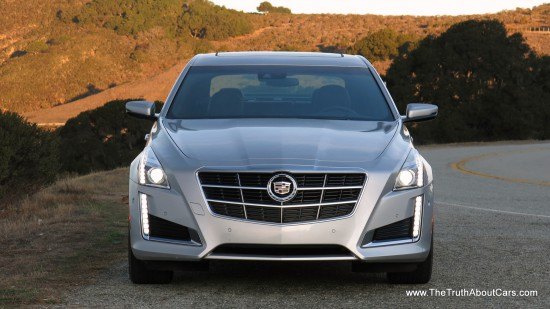
















































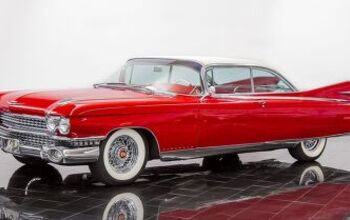

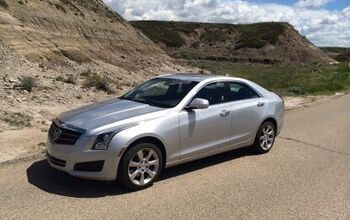
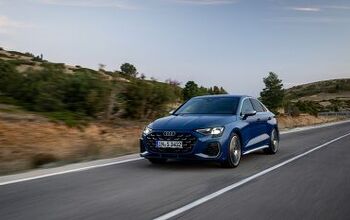
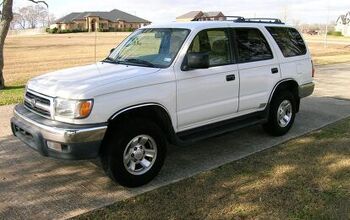

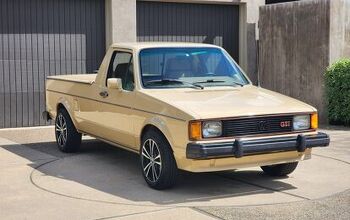
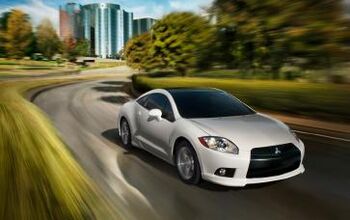
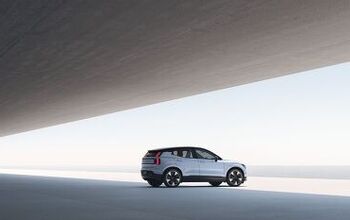
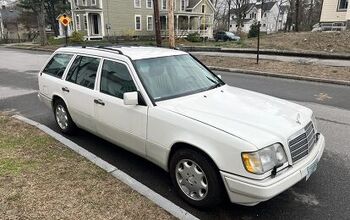
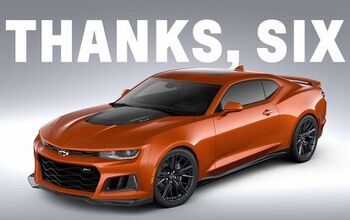

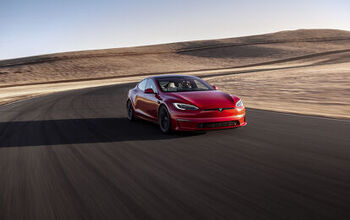
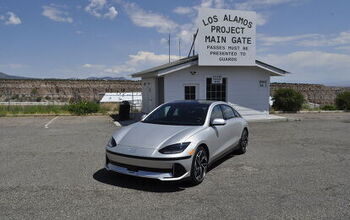
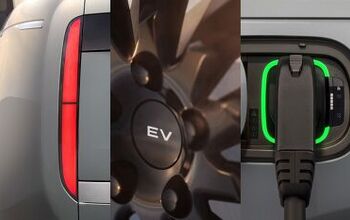
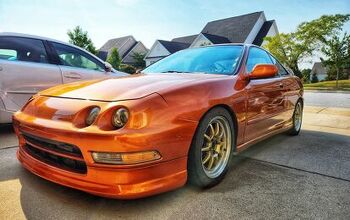

Comments
Join the conversation
I read through some of the review. While I don't personally care anything at all about this car, as I'd never buy one (or any Cadillac...it's just not my thing), I absolutely could not leave TTAC without saying how ridiculous this car looks with it's tiny, vacuum castor wheels. It's a LARGE car, and the tiny wheels make it look even bigger. Now before you got thinking I'm some kind of youngster who demands 30 inch wheels on every run-of-the-mill Camaro, let me tell you that that I drive a Chevy HHR with 16 in steel wheels. But they are at least proportionate to the car they are used on. This CTS looks like a whale on tiny roller skates. Which is a shame because I think the styling is pretty attractive. Get some 20's on there and I'd be all about it.
Too expensive. Their brand isn't at 95% of BMW. So the price shouldn't be either.